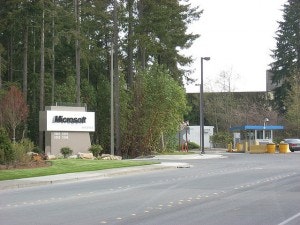The reports out of IDC and Gartner on Apr. 10 that worldwide personal computer shipments sharply declined in the first quarter of the year have shocked the markets and produced sell-offs in major PC makers as well as Intel Corporation (NASDAQ:INTC), Microsoft Corporation (NASDAQ:MSFT) and even Apple Inc. (NASDAQ:AAPL). IDC estimates that PC sales fell by about 14% year-over-year to 76 million units, while Gartner estimates the decline to be only 11% with worldwide sales of 79 million. Most of the blame for the shipment declines has been laid at the feet of Microsoft.
Poking a hole in expectations

The various PC makers will probably see revenue declines in their PC sales about equal to the IDC/Gartner numbers, with the exception of Apple. IDC indicated that the percent declines won’t be as bad for Apple Inc. (NASDAQ:AAPL), but didn’t give any specific figures. For Microsoft Corporation (NASDAQ:MSFT), the declines in Windows 8 licensing will probably be much worse. The suspicion I voiced in “Apple’s Transparency” that Microsoft had front-loaded sales of Windows 8 licenses to OEMs in Q4 2012 in order to report greater than 60 million unit sales will probably turn out to be correct.
However, this really depends on the proportion of Windows 8 sales compared to Windows 7 sales, which is currently unknown. There’s plenty of anecdotal evidence that non-touch enabled Windows 7 laptops are commanding a higher price than their Win8 counterparts, indicating strong residual demand for Windows 7. At the end of the year, there were still a lot of non-touch PCs in the manufacturing pipelines that Windows PC makers needed to clear out in Q1.
Adrian Covert’s Apple-beating vision
Simultaneous to the release of the shipment data on April 10, Adrian Covert published an article proclaiming yet another “Apple-beating” Microsoft Windows initiative. Such articles appear to pander to antipathy for all things Apple Inc. (NASDAQ:AAPL) on the part of many Microsoft Corporation (NASDAQ:MSFT) supporters and investors, as well as their impaired memory. Wasn’t Windows 8/RT/Phone supposed to crush Apple? Hasn’t much of the pessimism about Apple since the end of last year been fueled by the expectation that Microsoft was doing precisely that?
Covert’s article was based on a Digitimes report that came out on Monday Apr. 8 that Microsoft Corporation (NASDAQ:MSFT) was working on a version of Windows, codenamed Windows Blue, that would “merge Windows (PC) with Windows Phone.” The article went on, “The Windows Blue project is being developed by a team separate from the Windows and Windows Phone departments and its purpose is to merge the two operating systems to compete against Google’s Android and Chrome, according to the rumors.” While acknowledging that the rumors are unconfirmed, Covert trumpeted that “Blue could end being a huge deal. Dissolving the barrier between mobile and desktop would be nothing short of impressive.”
Apparently oblivious to hardware considerations, Covert doesn’t understand the implications of the convergence he describes. Microsoft Corporation (NASDAQ:MSFT) has already done the best job they could of converging Windows 8/RT/Phone given that Windows 8 runs on Intel processors and RT and Phone run on ARM processors. The only way to produce further convergence would be to move to a single processor platform. For a number of reasons, it wouldn’t be feasible to move to an all-ARM architecture, so the only direction Microsoft can go is to an all-Intel architecture. Since Intel Corporation (NASDAQ:INTC) makes Atom x86 chips for mobile phones as well as tablets, convergence to all-Intel is perfectly doable.
The rumor really resonated with me since I’ve been predicting/advocating just such a move since I wrote “Why Microsoft Needs Intel’s Haswell CPU.” As a developer contemplating a Windows 8 project, I would like nothing better than to see this happen. A converged platform would be much more attractive to developers in general. Do I believe the rumor? I’m sure that Microsoft has been looking at the feasibility of moving its Windows Phone platform to Intel Corporation (NASDAQ:INTC). I don’t doubt that demo projects are already under way. Companies like Microsoft, Google and Apple Inc. (NASDAQ:AAPL) always have these kinds of R&D projects going. Many will never see the light of day. For the time being, I believe that an Intel-based Windows phone remains decisionable.
No cause for celebration
For Microsoft investors, such a move would be no cause for celebration, since it would mean that Microsoft Corporation (NASDAQ:MSFT) was throwing in the towel on its Windows on ARM initiatives. Furthermore, existing Windows RT and Windows Phone 8 customers would be left out in the cold as developers curtail ARM related activities, and Microsoft makes clear that it will support the platforms for only a finite period of time.
Instead of fantasizing about crushing Apple Inc. (NASDAQ:AAPL), Microsoft investors need to take a very clear-eyed look at the current state of the company, with especial focus on what must be done to repair the damage done to its valuable Windows franchise. A converged platform is no guarantee of success, either for Windows phones, tablets or PCs. It’s clear that the tile-based Metro interface, which is a feature of all three platforms, is having trouble gaining consumer acceptance. Abandoning pop-up menus, windowed apps, and the desktop weren’t necessary to implement a touch-screen interface for PCs, and I believe they need to be reintegrated into Windows. But whatever Microsoft Corporation (NASDAQ:MSFT) does, the next Windows itself needs to become a fully integrated and consistent operating system.
Mark Hibben has a position in Apple. The Motley Fool recommends Apple and Intel Corporation (NASDAQ:INTC). The Motley Fool owns shares of Apple, Intel, and Microsoft.
